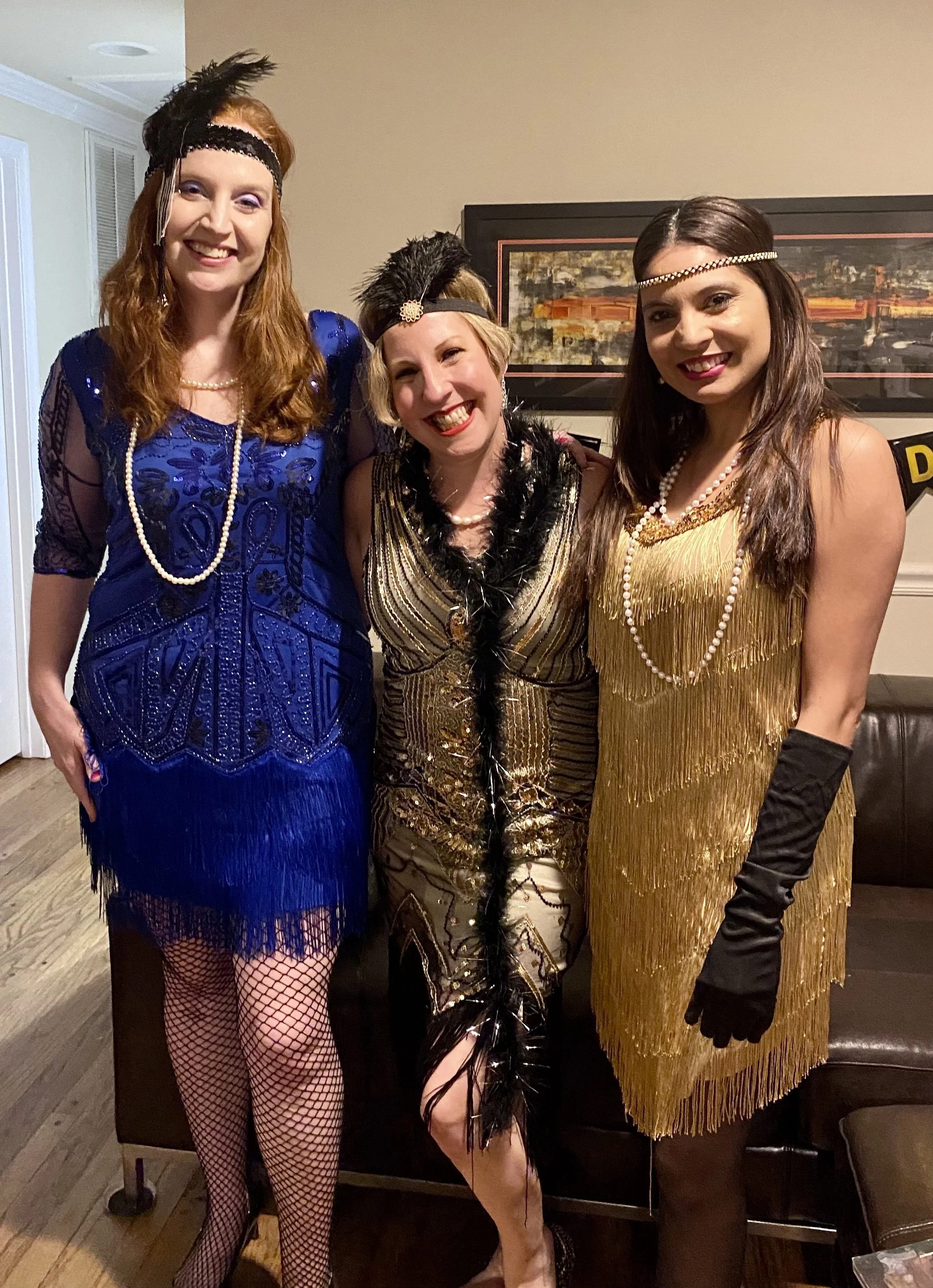Golden Age Thinking
Jeanne, myself, and Rebecca at my Great Gatsby theme party
In the 2011 Woody Allen movie, “Midnight in Paris,” Gil (Owen Wilson) and Adriana (Marion Cotillard) are both obsessed with periods in time generations before their own, the 1920’s and the late 19th century, respectively. By the end of the film, Gil finally rejects this “Golden Age Thinking,” and decides to make the most of the reality in which he lives.
I’ve always been subject to “Golden Age Thinking” myself, a certain nostalgia for the past in which life somehow seemed simpler. Witness the current resurgence of 90’s / Y2K fashion trends. In a Harpers Bazaar article this past September, Lauren Caruso credits this trend to the “lightheartedness of a more innocent time.”
Personally, having come of age in the 90’s, I can certainly relate. I, too, recall the days of baby tees, pleated miniskirts, satin dresses (cut on the bias), choker necklaces, and minidresses paired with chunky boots (a la Audrey Tatou in the 90’s French hit, “Amelie”). It’s perfectly fine with me to bring back boot-cut jeans and flannel, much of which I’ve found at the thrift store; thrifting itself is a throwback to the 90’s grunge era, with its anti-establishment ethos.
My other favorite fashion eras are the 20’s and the 50’s. The Great Gatsby has always been a favorite book of mine, and the Baz Lurhmann 2013 movie version blew me away! So much about that era fascinates me - the fashion, the music, the Art Deco. Ground-breaking designers like Jeanne Lanvin, Elsa Schiaparelli, and of course Coco Chanel, allowed women greater freedom of movement, trading in Victorian corsets for drop-waisted shift dresses and even sportswear designed to actually play sports! Of course we’re all familiar with the signature flapper dress, with embellishments of beads, fringe, and feathers. Tightly cropped hairstyles and cloche hats became de rigeur, as did higher hemlines and silk stockings (a real luxury in post WWI). In 1926 Chanel famously launched the LBD, a style that has continued to evolve to this day.
In the 1950’s corsetry and shapewear returned to women’s fashion, largely thanks to Dior’s “New Look” in 1947. Revolutionary in it’s time, the voluminous skirts stirred controversy with the amount of fabric required, so soon after WWII put fabric in short supply. Gradually the hourglass silhouette with a cinched waist, fitted bodice, and Peter Pan collar replaced the relatively shapeless look of the 20’s and 30’s.
So what did these three eras - the 20’s, 50’s, and 90’s - have in common? They were all post-war decades, and they each occurred at a time when the US was experiencing a strong economy. The population, war-weary and reveling in newfound prosperity, chose to celebrate with decadence in fashion, music, art, and architecture. In some cases, designers, musicians, and other creatives rebelled against the status quo.
Whatever the reason I, like Gil, find myself drawn the unabashed beauty and extravagance of designs from other eras. The good news is that what goes around, comes around.
